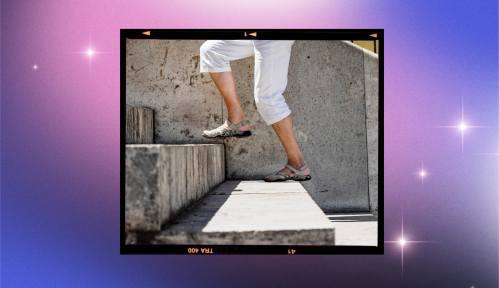How To Break Up With Disposable Tampons—And 5 More Environmentally Conscious Options
Unregulated period products can be bad for you *and* the earth. Ditch toxic options for these eco-friendly pads and tampons.

Conventional period products are giving Mother Earth cramps (or causing bloating, moodiness, exhaustion… you get the point). Offerings designed to absorb period blood have not, traditionally speaking, been made with the planet in mind, and every year, nearly 20 billion pounds of them get dumped in landfills, while others wind up in the ocean, making the need for alternatives like eco-friendly pads and tampons oh-so necessary.
Experts in This Article
Helen Lynn is an environmenstrual campaign manager and health advisor at Women’s Environmental Network (Wen).
You see, tampon applicators aren’t recyclable after use. As for pads, most are 90-percent plastic, meaning that they can take 500–800 years to decompose. What’s more, all conventional period products contribute to our microplastic problem by contaminating water systems. Finally, one year’s worth of feminine hygiene products (and all of the materials that comprise them) translates to a carbon footprint of 5.3 kg, or nearly 12 pounds of CO2 emissions.
“Single-use disposable period products aren’t only wasteful, they’re unsustainable, unsafe, and unaffordable for many,” says Helen Lynn, environmenstrual campaign manager at the Women’s Environmental Network. If it sounds like a toxic relationship, that’s because it is.
How to kick your tampon habit
The ecological damage that tampons and pads cause is clear, but they pose risks to our health, too—a fact that may make it easier for many to part ways with the products.
“Cosmetics are better regulated than period products,” Lynn says. “This is a huge concern given the number of toxic chemicals that have been found in period products all over the world, most recently in India. Toxic chemicals have no place in products intended for use in or near such an absorbent part of the body, i.e. the vagina and vulva.”
Phthalates, bisphenols, and parabens are among the chemicals commonly found in period products, those linked to cancer, reproductive and developmental disorders, asthma, allergies, and more—and that’s not even taking the synthetic fragrances (which can contain up to 3,000 chemicals) into account.
In short, period products cause both personal and environmental harm. So, are you ready to break the cycle and break up with your tampons for good? These alternatives will help ease the transition and improve your relationship with the planet in the process.
5 sustainable pad and tampon alternatives
1. Menstrual cups
One way to combat the waste problem associated with period products is to opt for something reusable—like the menstrual cup. Crafted from silicone, these cups are designed to be inserted into the vagina to sit and collect menstrual blood. Once full, the cups can be emptied, washed, and reused for a few years, with the best menstrual cups lasting up to 10 years, saving the planet (and your wallet) from waste.
As for emissions, exchanging your tampons for a menstrual cup can lessen your carbon footprint, saving .007 tons of CO2 (or 17 miles in a standard gasoline-powered car) from entering the atmosphere.
2. Period underwear
Modern period underwear is sleek, hyper-absorbent, and downright convenient. Once purchased, these helpful undies can be worn and washed like any other pair; though, Lynn notes that some period underwear may contain PFAS, known as “forever chemicals” because they can say in your body for long periods of time and disrupt your endocrine system among other negative side effects, so keep an eye on materials and makeup.
3. Reusable pads
A single disposable pad and the packaging that accompanies it can contain as much plastic as five plastic bags! Reusable cloth pads help to mitigate this waste.
Made from sustainable fabrics like bamboo and organic cotton, the simple solution can work to absorb the same amount of blood as two to four tampons and last for up to five years. Once you wrap your head around the concept, you can even try your hand at a DIY version.
4. Plastic-free or reusable applicators
This is not a wholesale solution, but it’s certainly a step in the right direction. If you don’t see yourself eschewing tampons entirely, and you can’t imagine insertion sans an applicator, start by going plastic-free (which many direct-to-consumer tampon brands have switched to) or reusable. That said, a finger alone really works.
5. Biodegradable pads and tampons
If you cannot fathom the thought of ditching your go-to period product, work toward a healthier future by purchasing biodegradable pads and tampons. Brands like Natracare and Saathi craft offerings from plant materials and organic cotton, ditching all synthetics so that the products can decompose in your home compost pile or bin, all while saving the world on plastic waste.
Keep in mind that cutting up pads and tampons will help them break down more quickly in your healthy compost. Even with the extra aid, the process can take up to two years. But hey! That’s literally hundreds less than a traditional period product.
Sign Up for Our Daily Newsletter
Get all the latest in wellness, trends, food, fitness, beauty, and more delivered right to your inbox.
Got it, you've been added to our email list.










